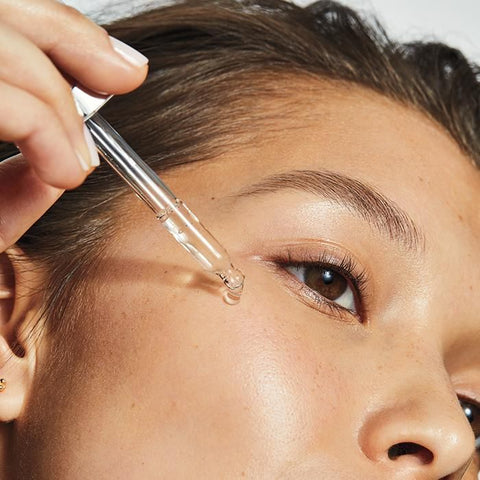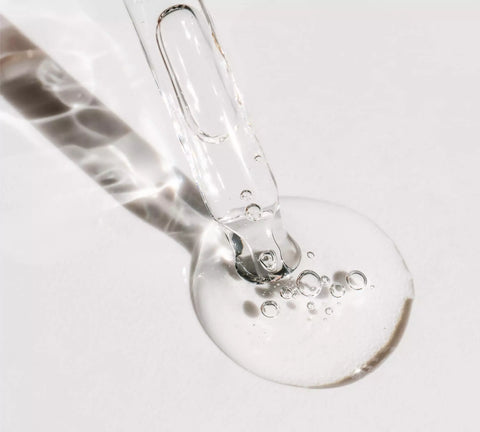When to Start Using Retinol: Best Age and Frequency for Maximum Results
Key Takeaways:
- Start early: Begin using retinol in your mid-to-late 20s for prevention.
- Gradual introduction: Build up usage over time to avoid irritation.
- Consistency is key: Expect visible improvements in 8-12 weeks.
- Always use sunscreen: Retinol increases sun sensitivity, so daily SPF is a must.
Retinol is a powerhouse ingredient in the skincare world, celebrated for its ability to smooth wrinkles, even skin tone, and promote a youthful glow. But many people wonder: when should you start using retinol, and how often should you apply it? In this guide, we’ll break down the optimal age to introduce retinol, how to use it effectively, and essential tips for maximizing its benefits.
What Is Retinol and Why Is It So Popular?
Retinol is a derivative of Vitamin A and a potent skincare ingredient known for its multiple benefits:
- Collagen stimulation: Helps reduce the appearance of fine lines and wrinkles.
- Cell turnover: Encourages skin regeneration for a smoother, fresher complexion.
- Hyperpigmentation: Fades dark spots and sun damage.
- Improved skin texture: Reduces the appearance of pores and smooths rough skin.
These anti-aging and skin-renewing properties make retinol an essential addition to many skincare routines. But knowing when and how to incorporate it into your routine is key to achieving optimal results.
When Should You Start Using Retinol?
While retinol is commonly associated with anti-aging, it’s not just for mature skin. In fact, dermatologists recommend starting retinol in your mid-to-late 20s, when the skin’s natural cell turnover begins to slow. This early introduction can help prevent fine lines and other signs of aging from forming.
In Your 20s to Early 30s:
This is the ideal time to prevent signs of aging and keep your skin looking youthful. Starting retinol at this stage helps with:
- Dull skin: Retinol encourages cell turnover, revealing a brighter complexion.
- Faint lines: It prevents early wrinkles from deepening and becoming more prominent.
In Your Mid-30s to 40s:
Visible signs of aging, like crow’s feet and laugh lines, may start to appear. Retinol at this stage can:
- Reduce the depth of wrinkles: Stimulates collagen production, keeping skin firm.
- Restore skin’s elasticity: Helps skin look plumper and more youthful.
In Your 50s and Beyond:
Even later in life, retinol remains beneficial. It can help address deeper wrinkles and improve skin texture, even when collagen production starts to decline. Continue using retinol to:
- Minimize deeper wrinkles: Smoothens and firms skin over time.
- Enhance skin elasticity: Improves the appearance of aging skin.
How Often Should You Use Retinol?
The frequency of retinol use depends on your skin type, tolerance, and the concentration of the product. Here’s how to build up usage safely.
For Beginners: Start Slowly
If you're new to retinol, it's important to ease into it. Here's a step-by-step guide:
- Week 1-4: Start with applying retinol once or twice a week.
- Week 5-8: If your skin tolerates it well, increase to every other night.
- Week 9 and beyond: Gradually work up to nightly use.
For sensitive skin, it's advisable to start with a lower concentration (like 0.25% or 0.3%) to minimize irritation.
For Experienced Users
If you've been using retinol for months or years, your skin may handle higher concentrations and more frequent use. Here’s what to do:
- Use 3-5 times a week or even nightly, depending on how your skin reacts.
- Higher concentrations (0.5%-2.5%) can be introduced as your skin adjusts.
Be mindful of irritation—overuse can lead to dryness or peeling. If this happens, reduce frequency and allow your skin to recover.
Best Time to Apply Retinol
Retinol is best applied at night. Sunlight can break down retinol, rendering it less effective. Applying it before bedtime allows retinol to work while you sleep, encouraging cell renewal without exposure to UV light.
Why Sunscreen is Essential
Retinol can make your skin more sensitive to sunlight, increasing the risk of sunburn or pigmentation. To protect your skin:
- Apply broad-spectrum sunscreen (SPF 30 or higher) every morning, even on cloudy days.
- Reapply sunscreen throughout the day, especially if you're outdoors.
Signs You're Ready to Start Using Retinol
Wondering if it's time to introduce retinol into your routine? Look for these signs:
- Fine lines: You may notice subtle wrinkles forming around the eyes or mouth.
- Hyperpigmentation: Dark spots or sunspots becoming more noticeable.
- Dry or uneven skin: Skin starts feeling rough or less plump.
- Preventive care: If you want to prevent aging before it shows, retinol is a great preventative measure.
Tips for Using Retinol Effectively
-
Start with a Gentle Cleanser Cleanse your skin with a non-stripping, hydrating cleanser to remove impurities without irritating your skin. Avoid harsh exfoliants, as they can heighten the risk of dryness and irritation when paired with retinol.
-
Moisturize After Retinol Retinol can be drying, so always follow up with a moisturizing serum or cream. Look for ingredients like:
- Hyaluronic acid: Deeply hydrates and plumps.
- Ceramides: Strengthens the skin’s barrier.
- Glycerin: Locks in moisture.
-
Be Patient Retinol requires time to show results. Most users start noticing visible improvements after 8-12 weeks of consistent use. Be patient and stick to your routine.
-
Avoid Mixing with Harsh Ingredients Some ingredients, like vitamin C, AHAs, or benzoyl peroxide, can be too harsh when combined with retinol. Stick to a simple, hydrating routine and introduce one new product at a time.
When Should I Start Using Retinol?
Question: At what age should you start using retinol?
Answer: Dermatologists recommend starting retinol in your mid-to-late 20s to maintain youthful skin and prevent early signs of aging. However, it can be effective at any age to reduce wrinkles and improve skin texture.
Conclusion: Start Your Retinol Journey Today
Starting retinol early in your skincare routine can prevent signs of aging and keep your skin glowing. Whether you're in your 20s or 50s, retinol can be a game-changer for skin texture, collagen production, and wrinkle reduction.
Remember to start slow, be patient with results, and always apply sunscreen to protect your skin. If you’re ready to take the plunge into the world of retinol, we offer a range of retinol serums suitable for all skin types.
Shop today to discover the secret to radiant, youthful skin!





Comments (0)
There are no comments for this article. Be the first one to leave a message!